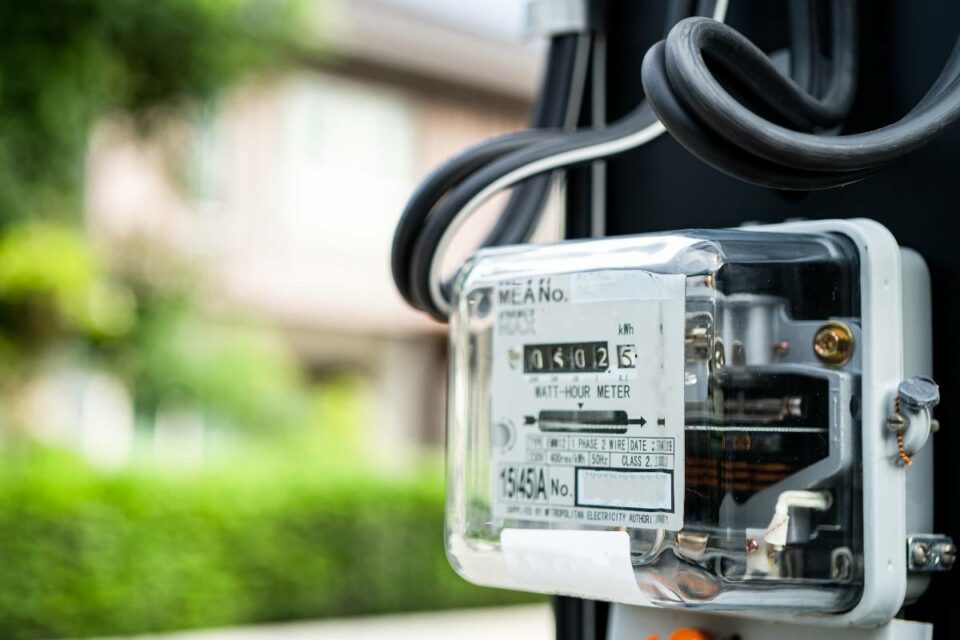Are you wondering how micro-units can transform commercial real estate? You’re not alone – many savvy entrepreneurs are turning to these miniature but mighty spaces as a cost-effective way to start their small businesses. Whether you’re looking for the perfect building to host your innovative retail concept, or if you need an affordable office space in an urban area, there is no doubt that micro-units have revolutionized the industry.
In this blog post, we will dive into some of the key points of micro-unit development and explore why this mini-era has become so popular with businesses. We’ll also discuss what landlords need to know before capitalizing on this new trend to maximize their profits while still providing quality commercial space solutions for tenants.
In the business’s simplest of terms, micro-units are any type of commercial or multi-family space that is smaller than the market average. These micro unit varies in different markets which is why they vary so greatly across the various markets.
Key Takeaways
- Micro-units are gaining popularity in commercial real estate due to urbanization, demand for affordable workspaces, and start-up culture. Their efficient design and lower costs make them attractive to businesses.
- These spaces offer efficient use of space, cost-effectiveness, adaptability, and eco-friendliness, appealing to various businesses for their commercial needs.
- Landlords must navigate challenges like zoning regulations and investor skepticism. It’s crucial to understand that micro-units aren’t suitable for all businesses and to identify which types benefit most from these compact spaces.
Table of Contents

Historical Context
The traditional commercial real estate (CRE) model primarily revolves around maximizing square footage to lease out to businesses, typically in large lots. From towering skyscrapers in urban cores to expansive suburban office parks, the emphasis has largely been on providing vast spaces that companies can customize to fit their needs.
For example, a multinational corporation might lease multiple floors in a high-rise, where they can establish various departments, meeting rooms, and executive suites, allowing them to operate cohesively under one roof.
These spaces were often signed under long-term leases, providing both the landlord and tenant with a sense of security and predictability in their financial planning. The traditional model valued the economies of scale, with larger spaces translating to higher revenues, thus incentivizing developers to focus on building bigger and grander properties.
Shift Towards More Compact Spaces
However, in recent years, there’s been a notable shift towards more compact and efficient spaces in the commercial real estate sector. There are several reasons for this shift:
- Changing Work Patterns: The rise of the gig economy, freelancers, and remote work has led to a demand for smaller, flexible office spaces. Co-working spaces, like WeWork or Regus, exemplify this trend. Instead of a company leasing an entire floor, individuals or small businesses can lease just a desk or a small office suite, often on more flexible terms.
- Urbanization and Space Constraints: As urban areas become more populated, space comes at a premium. It’s both economically and environmentally more viable to design compact, multi-functional spaces. For instance, instead of a vast showroom, a retailer might opt for a smaller footprint in a prime location, maximizing the use of vertical space and innovative store layouts.
- Economic Considerations: Smaller spaces often mean reduced overheads in terms of energy costs, maintenance, and rent. A startup might not need (or afford) an expansive office but would benefit from a modest space in a business hub, allowing for networking and collaboration without the hefty price tag.
- Technological Advancements: Digital transformation means that many businesses no longer need vast archives, storage rooms, or even physical retail spaces. A tech firm today can function seamlessly with a lean setup, relying on cloud storage and virtual meetings, as opposed to the bulky infrastructures of yesteryears.
- Shift in Consumer Behavior: In the retail sector, for instance, consumers are increasingly favoring ‘experience’ over ‘possession’. Pop-up shops, which are temporary and often smaller than traditional stores, offer unique experiences and create a sense of urgency, as they’re only available for a limited time.
Easy to Understand Example
Imagine running a bookstore in the past. You’d probably require a large space to stock thousands of books, accommodate reading areas, and provide storage for inventory. Fast forward to today, and think of a modern bookstore or even an electronics store.
With the rise of e-readers and online shopping, these shops have become more experiential hubs. They might be smaller in size, focusing on showcasing a curated collection, hosting events, or even integrating a café for visitors. The shop becomes more about the experience, the community, and the brand than just the sheer volume of inventory.
The world of commercial real estate is adapting to the changing needs of businesses and consumers. While the grandeur of expansive spaces has its own charm, the efficiency, flexibility, and adaptability of micro-units are becoming increasingly relevant in today’s fast-paced, digitally-driven world.
As with all evolutions, the key for investors, developers, and tenants alike is to stay agile, anticipate trends, and ensure that spaces—whether vast or compact—serve a purpose and add value to the end user.
Benefits of Micro-Units
The modern real estate landscape is seeing an emergence of micro-units, small living spaces that are designed to maximize functionality while minimizing the footprint. There are several benefits associated with micro-units that cater to the various needs of the urban dweller. Here’s an in-depth look into some of those benefits:
Efficient Use of Space
Micro-units emphasize the smart use of space, often incorporating multifunctional furniture and innovative design solutions to make the most out of limited square footage.
Example: Imagine a space where your bed can transform into a couch during the day, and the underside of your coffee table serves as storage. A wall unit might fold down into a dining table, and built-in shelving can eliminate the need for bulky bookcases. With micro-units, every square inch is meticulously planned out to provide maximum utility.
Lower Costs and Increased Affordability
Smaller spaces often translate to reduced construction and maintenance costs, which can result in more affordable housing options for renters and buyers alike.
Example: Consider a young professional moving to a city with a high cost of living. Micro-units offer an opportunity for this individual to live centrally without breaking the bank. Instead of renting a traditional one-bedroom apartment, they might opt for a micro-unit at a fraction of the price.
Adaptability and Flexibility of Design
Due to their compact nature, micro-units can easily be adapted to suit different needs and preferences. The inherent flexibility of their design allows for personal customization and ensures that the space can evolve with the resident’s changing requirements.
Example: A freelance artist might need a studio space during the day but a relaxing living area in the evening. With movable walls or convertible furniture, a micro-unit can seamlessly transition between these functions.
Eco-friendliness:
Smaller living spaces typically consume less energy for heating, cooling, and lighting. The reduced use of building materials in their construction and the emphasis on sustainable design principles also contribute to a lower carbon footprint.
Example: Think about the energy required to heat a large loft apartment in the winter versus a tiny apartment or conventional apartment. The smaller space would naturally need less energy to maintain a comfortable temperature. Over time, the energy savings can be substantial, leading to a greener, more sustainable way of living.
Micro-units present an innovative approach to modern urban living. They cater to the changing needs of a growing population, addressing concerns about space, affordability, and the environment. Whether you’re a minimalist at heart or simply value efficiency and eco-friendliness, micro-units offer a compelling alternative to traditional real estate options.
Market Demand & Drivers
Micro-units, often perceived as compact, efficiently-designed spaces, have been steadily gaining traction in the commercial real estate sector. This growing trend can be attributed to a combination of shifting demographic factors, evolving consumer behaviors, and innovative business models. Delving deeper, we can identify three primary market demands and drivers that underscore this shift:
Urbanization and Population Growth
With rapid urbanization taking place in many parts of the world, cities are becoming denser, with more people looking for opportunities in metropolitan areas. This influx has led to an increased demand for real estate, particularly in central business districts and urban hubs. However, this surge in demand has simultaneously driven up property prices. As space becomes a premium asset, there’s a compelling need for more efficient, space-saving solutions.
This is where micro-units come into play. By optimizing every square inch of space, these units allow for maximum utility, enabling businesses to operate in prime locations without the traditional operating costs associated. For example, a small café or retail brand might opt for a micro-unit in the heart of a bustling city, offering its products or services to a high-footfall area, without bearing the burden of a large space’s rent.
Start-up Culture and Need for Affordable Workspaces
The start-up ecosystem has proliferated over the past few decades, with many entrepreneurs and small teams looking for flexible, cost-effective workspaces. Traditional office spaces, which often require long-term leases and come with a hefty price tag, may not be feasible for these emerging businesses. Enter the micro-unit workspaces – these provide an ideal solution by offering small, yet functional areas that cater specifically to start-ups.
For instance, consider a tech start-up in its nascent stages, comprising a team of three. Rather than investing in a sprawling office, they could opt for a micro-unit that accommodates their current needs, allowing them to allocate funds to other vital areas like product development or marketing. These spaces are not only affordable but also foster a sense of community and collaboration, essential ingredients for budding businesses.
Consumer Demand for Smaller Retail Spaces
Consumer behavior has evolved, and with it, the retail landscape. Today’s consumer, empowered by technology and influenced by trends like minimalism and sustainability, often seeks intimate, unique shopping experiences. Smaller commercial units can deliver precisely this. By having a smaller footprint, these spaces can offer specialized, curated collections, allowing retailers to stand out in a crowded market.
An illustrative example here could be a niche perfumer who doesn’t require a vast store. A micro-unit in a trendy neighborhood allows them to showcase their exclusive range, creating an intimate setting where customers can enjoy personalized service and a unique shopping experience.
The rise of micro-units in commercial real estate mirrors a broader societal shift towards optimization, efficiency, and adaptability. Whether driven by demographic changes, entrepreneurial spirit, or evolved consumer tastes, it’s clear that these compact spaces are here to stay, offering innovative solutions in an ever-evolving market landscape.
Challenges & Concerns
Commercial real estate has been experiencing a paradigm shift in recent years, with one notable trend being the rise of micro-units. These compact spaces are designed to maximize utility in a minimal footprint, catering to modern needs and preferences. However, as with any pioneering concept, they come with their own set of challenges and concerns.
Zoning and Regulation Hurdles
- Zoning laws, at their core, are established to dictate how land in particular areas can be used. In many urban settings, these laws were written decades ago, before the concept of micro-units was mainstream. As a result, many zones have minimum square footage requirements that inadvertently make the development of micro-units illegal or challenging.
- Example: Imagine a city where the minimum square footage for a commercial space is 1,000 sq. ft. Developers aiming to build a 300 sq. ft. micro-unit would face significant regulatory barriers. They would either need to apply for special permits or variances, or else lobby for the revision of these outdated zoning regulations.
- Furthermore, building codes that dictate aspects like ceiling height, window sizes, and egress can be limiting. The essence of a micro-unit’s design might challenge some of these standards, requiring builders to navigate a complex bureaucratic maze before the project even begins.
Investor Skepticism
- Investors, especially those who are more traditionally minded, might harbor reservations about the viability and profitability of micro-units. Their concerns often stem from the novelty of the idea and the perceived risks associated with trying something new.
- Example: An investor accustomed to backing large-scale commercial spaces might question the rent-per-square-foot earnings of a micro-unit. They might think, “Why would someone pay a premium for such a small space?” Yet, in cities with high real estate prices and a demand for affordable, centrally located options, micro-units can offer a competitive edge.
- Investors also might be wary of market saturation. They could fear that if too many tiny units are developed too quickly, demand might not keep pace, leading to vacancies and reduced returns.
Limitations in Design
- Micro-units, by nature, require creative and thoughtful design. The goal is to provide a functional, appealing space within a very limited area, which can pose challenges.
- Example: In a traditional commercial setting, a restaurant space or cafe might be designed with ample seating, space for kitchen appliances, and a spacious restroom. In a micro-café, every inch counts. Designers might need to use convertible furniture, optimize vertical space, or use multifunctional appliances to make the space work.
- A potential drawback is that certain amenities or design elements might need to be compromised or omitted entirely to make the most of the space. This can lead to trade-offs that some potential tenants or customers may find less appealing.
While micro-units in commercial real estate present an exciting opportunity to redefine urban spaces and cater to evolving needs, they also come with a set of challenges that stakeholders must address. As with any emerging trend, there will be growing pains, but with careful planning and a willingness to adapt, these challenges can be transformed into innovative solutions.
This article that I wrote, titled “How to Find a Building for Your Business – Complete Guide,” is packed with valuable insights and tips to assist you in successfully locating the perfect space for your business. Whether you’re a startup or an established company, this guide will offer you detailed information and step-by-step instructions on navigating the process of finding an ideal building for your specific needs and requirements.
From understanding the market trends to evaluating location suitability, this article is designed to provide you with all the essential knowledge and tools to make an informed decision. Take advantage of this resource to make your search for a business building a smoother and more fruitful endeavor.
Case Studies
Micro-unit commercial spaces refer to compact, efficiently designed retail or office spaces. This concept has grown in popularity, especially in urban settings where space is at a premium and the cost of real estate is high. Here are some examples of successful micro-unit commercial spaces and the lessons learned from them.
1. WeWork and Other Co-Working Spaces
WeWork and similar co-working companies offer flexible office spaces that cater to freelancers, startups, and small businesses. Instead of renting out an entire office, members rent desks or small office suites.
Lessons Learned:
- Flexibility is Key: By offering month-to-month memberships, these spaces cater to the changing needs of modern businesses.
- Community Matters: Regular events and communal spaces foster a sense of community, networking, and collaboration.
- Design is Crucial: Efficient use of space combined with aesthetic appeal can create an engaging environment.
2. The Yard: Lower East Side, NYC
This micro-retail space hosts multiple independent vendors in a collective space. Each vendor occupies a small booth, sharing communal checkout areas.
Lessons Learned:
- Diversity Draws Crowds: A mix of products and vendors attracts diverse clientele and generates foot traffic.
- Shared Resources Save Costs: Shared utilities, checkout systems, and marketing efforts reduce overhead for individual vendors.
- Location Matters: Being in a trendy, high-traffic area can compensate for limited individual visibility.
3. B8ta Stores
B8ta offers tech companies small spaces within their retail locations to showcase and sell their products. It provides a platform for tech startups to get in front of customers without the massive overhead of traditional retail.
Lessons Learned:
- Experience Over Purchase: The stores emphasize product interaction, allowing customers to try before they buy.
- Data-Driven: B8ta provides vendors with real-time data on product interactions, allowing for quick pivots and strategy shifts.
4. The Pod Hotels
A chain of micro-hotels offering compact, efficiently designed rooms at a lower cost, primarily in urban centers.
Lessons Learned:
- Sacrifice Space, Not Experience: Though the rooms are small, amenities like high-quality bedding, tech integration, and modern design create a comfortable stay.
- Public Spaces Add Value: Communal lounges, cafes, and rooftops become essential when private spaces are minimized.
5. Food Halls
Large spaces that house multiple small, often artisanal food vendors. Examples include the Time Out Market in Lisbon and the Chelsea Market in NYC.
Lessons Learned:
- Curation is Crucial: Selecting a variety of quality vendors ensures a diverse and appealing range of offerings.
- Ambiance Affects Sales: The atmosphere, seating arrangements, and overall design play a huge role in attracting and retaining customers.
Key Takeaways:
- Efficiency and Design: Micro-units need to maximize every square inch without sacrificing functionality or aesthetic appeal.
- Community Over Isolation: Shared spaces can foster a sense of community, adding value beyond the rented space itself.
- Location and Accessibility: Being in a desirable or high-traffic location can play a crucial role in the success of micro-unit commercial spaces.
- Flexibility: Adaptable contracts, layouts, and amenities can cater to the diverse and changing needs of clients.
The success of micro-unit commercial spaces demonstrates that with the right strategy and design, small can be not only beautiful but also profitable.
Future Prospects
The global landscape is evolving, shaped by socio-economic shifts, technological advancements, and changing consumer behaviors. One of the most notable market trends is the increasing demand for micro-units in urban areas. This trend can be attributed to factors such as urbanization, the desire for cost-efficient living spaces, and an increased preference for minimalist lifestyles.
Urban areas are seeing an exponential rise in population as people flock to cities in search of better economic opportunities, leading to constraints in housing availability. This population growth, coupled with rising real estate prices, has spurred a demand for compact, efficient living spaces.
Micro-units, often seen as studio apartments or dwellings under 400 square feet, are a result of this shift. For example, in bustling cities like New York or Tokyo, there’s a growing trend of young professionals opting for these smaller living quarters. Not only are they more affordable, but they also cater to the lifestyle of those who prioritize location over space.
Technology’s Role in Advancing Micro-units
Technological innovation has played a pivotal role in making these micro-units not just livable but also desirable. Here’s how:
- Space Optimization Technologies: Companies are investing in smart furniture solutions, such as beds that retract into walls or tables that double up as workstations. For instance, think of a dining table that can be effortlessly transformed into a workspace with built-in charging stations or a couch that converts into a bunk bed. These innovations ensure that the limited space is used to its maximum potential.
- Smart Integrations: With the integration of the Internet of Things (IoT) and home automation, micro-units can be controlled with the touch of a button or through voice commands. Examples include smart thermostats that adjust room temperature based on your preferences, lights that can change hues according to your mood, or refrigerators that can reorder groceries when you run low.
- Virtual Reality & Augmented Reality (VR & AR): These technologies can play a role in enhancing the lived experience of small spaces. Imagine having an AR system that allows you to change the wall art daily or a VR setup that lets you feel like you’re working in a spacious office or relaxing on a beach, all from the confines of your small apartment.
- Sustainable Tech: With sustainability at the forefront of modern architecture and design, micro-units are also benefitting from green technology. Solar-integrated windows or walls, efficient water-recycling systems, and energy-efficient appliances ensure that these compact living spaces are not just convenient but also eco-friendly.
- Community Integration Platforms: Many micro-unit developments are built with shared community spaces. Technology has facilitated platforms where residents can book shared amenities, communicate with neighbors, or even participate in community events. This fosters a sense of community and shared living, which is essential in such compact spaces.

Micro-Units in Commercial Real Estate FAQs
How do micro-units contribute to sustainability?
Micro-units are often seen as being more eco-friendly than traditional commercial spaces, due to their efficient use of space and resources. By keeping the footprint small and utilizing modern energy-saving technologies, developers can ensure that micro-units have a positive impact on the environment.
Can micro-units be adapted for various business needs?
Yes, micro-units can be customized to cater to a wide range of business needs. Companies can opt for an open-plan layout or divide the space into various sections depending on their requirements. Technology also plays a big role in maximizing the potential of micro-units; from automated lighting systems and voice control devices to digital projectors and smart whiteboards—all of which can be integrated into the design.
How do regulations impact the creation of micro-units?
Zoning and regulatory guidelines are often seen as a challenge in the development of micro-units. While some cities encourage developers to create more compact spaces, others have strict rules on minimum sizes for commercial buildings. Developers must be aware of these regulations before they embark on their projects and take into account local market dynamics when deciding which type of space to build.
Are micro-units a short-term trend or here to stay?
The popularity of micro-units has been growing steadily in recent years, driven by both the need for smaller and more affordable commercial spaces, as well as a shift in consumer behavior toward experiences over possessions. As long as these underlying trends remain in place, it is likely that micro-units will continue to have an important role in commercial real estate.
How do micro-units differ from traditional commercial spaces?
The main difference between micro-units and traditional commercial spaces is the size. Micro-units are generally much smaller in footprint, often occupying less than 500 square feet, while traditional commercial spaces can range from 1000 to 10000 square feet or more. As a result, micro-unit apartments and others often have fewer amenities and require more innovative uses of space to maximize their potential.
Conclusion
With the increasing demand for micro-units in commercial real estate, landlords need to make sure they consider all of the various challenges and constraints that come with these smaller spaces. It’s important to assess which types of businesses are best suited for these units, as they don’t always work for every business.
If you’re considering making changes to your commercial property portfolio, such as investing in micro-units, it’s best to do your research and talk to a real estate professional. By speaking with an expert about the different geographies, demographics, and market conditions of your area, you can ensure that you make the right decision when investing in micro-units.
As a real estate professional with years of experience working with a variety of clients across many markets, I can provide valuable insights to help you plan for success. Call or Schedule a free consultation with me today and together we can create a plan for your future micro unit investment that works best for you!




